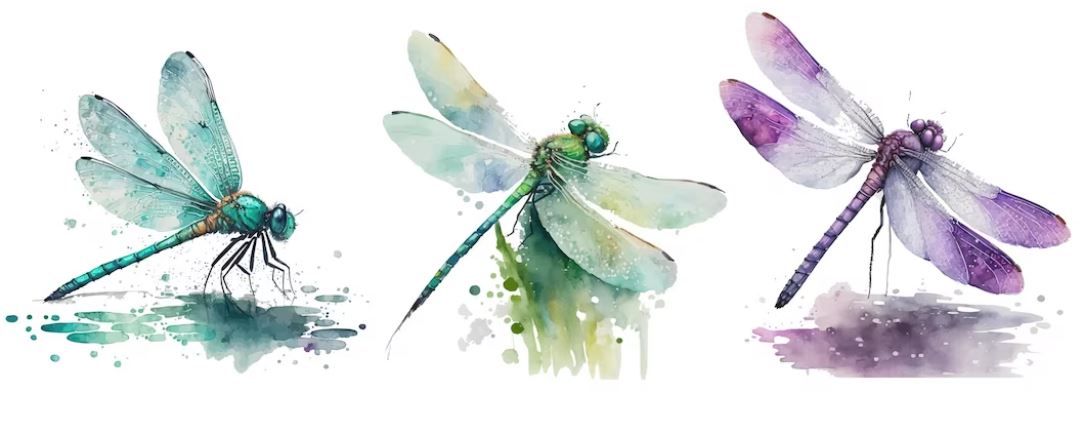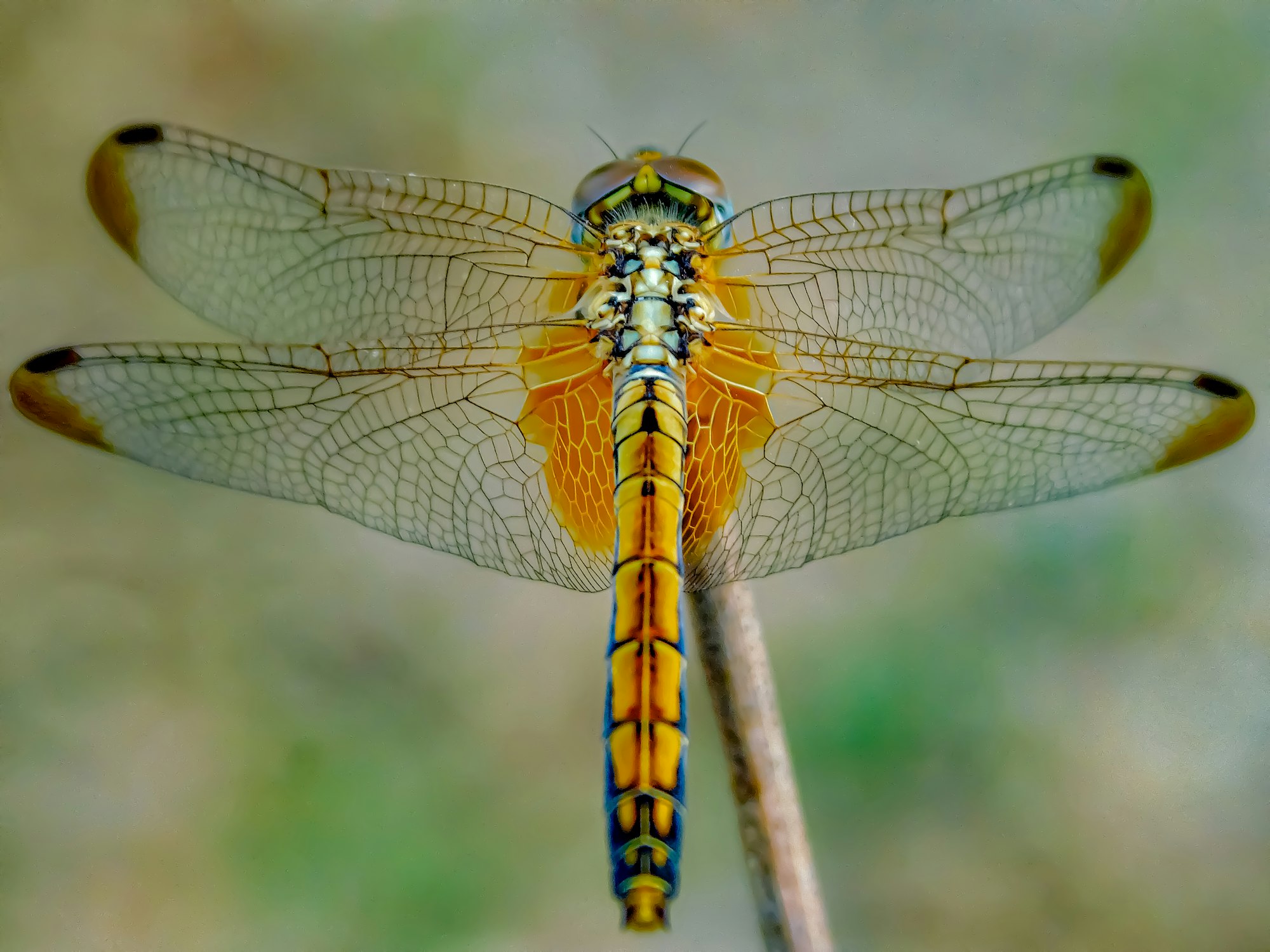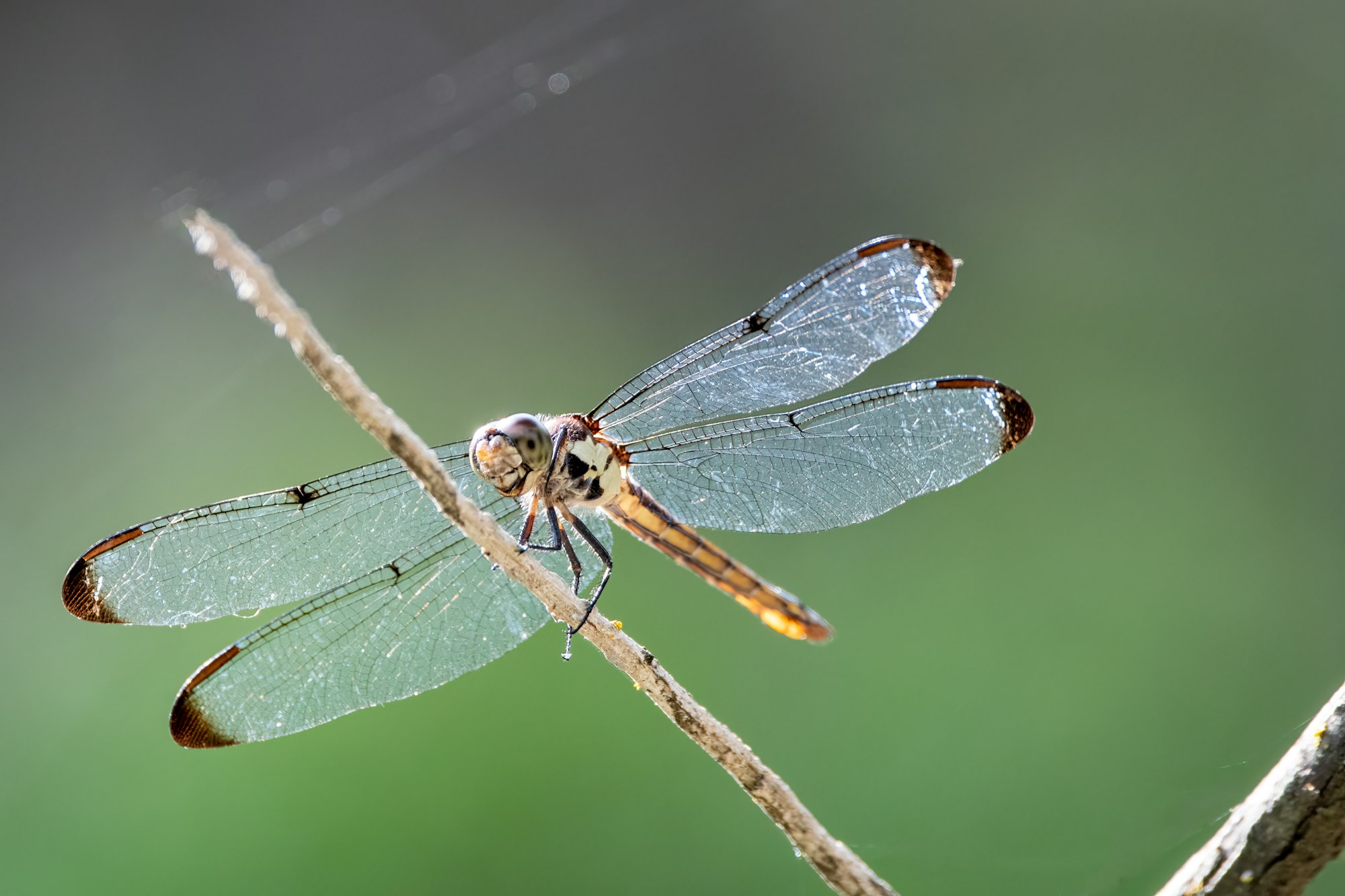The Delightful Dragonfly

Dragonflies hold a fascination for many of us with their gossamer wings glistening in rainbow shades of sunlight. Recently I was in Broome, in the far north of Western Australia for a few days.
Although I didn’t see many dragonflies, in March there are hordes of them. Not only are they beautiful, they play a vital role in keeping the insect population in balance and have some clever adaptations. Read on to learn more…

Dragonflies are amongst the greatest insect migrators in the world and one of the oldest insects on earth. Fossilised remains show that they existed 300 million years ago - some with a wingspan over 60 cm (as a comparison these days, the largest wingspan is megaloprepus coerulatus in South America which is 19 cm ).1
Around Broome Dragonflies mark the end of the Yawuru^ season (the wet - December to March) and the beginning of the short, hot season of Marul^ in April and May. This was the time when Aboriginal people moved back to the coast. In 2022 this change of season occurred in Broome on March 24th with the first easterly wind change and the immediate appearance of swarms of dragonflies especially around the Post Office area in Chinatown - unfortunately I could not find any photos.

There are 4500 different species of dragonfly in the world today (300 species in Australia) varying in size and colour. They love sunlight living near water, usually by stagnant pools and marshes. Their four large wings have beautiful lace-like patterns of veins, long slender bodies, a huge head and prominent eyes. Their bodies usually brightly coloured - red, blue, green, brown and yellow which become stronger as they grow older.1

Dragonflies move through the air at tremendous speeds sometimes reaching up to 90 kmph, often flying for hours on end and have been known to travel distances of 30 km or more. Usually they patrol area rich with insects - Mosquitoes, flies and midges form a large part of their diet.
With enormous eyes, their antennae (for sensing, touch and smell) are poorly developed and less important. Their jaws have strong tooth-like projections for biting into prey. Three pairs of legs attach to the body just behind the mouth which they use for seizing prey in mid-air.
Did you know dragonflies can fly forwards, sideways, backwards and hover (like a helicopter). Leonardo Da Vinci had a fascination with dragonflies designing a type of aircraft, after he observed the dragonfly.
These endearing insects play a vital role in keeping the insect population in balance, as well as delighting us with their mesmerising shapes, flying patterns and gossamer like wings. Next time you spot a humble dragonfly you’ll know there is a lot more to them than meets the eye!1

They are much loved and there are many internet sites devoted to their study and preservation such as the British Dragonfly society. If you would like to know more about dragonflies, click on the link below.
^ It’s always hot in Broome. During Yawuru season it's wet while during Marul it's particularly humid. There are actually 6 seasons experienced in Broome and NW of Australia - if you missed this post - here is the link:

Credits
1. Wkfl.asn.au/nature/dragonflies

